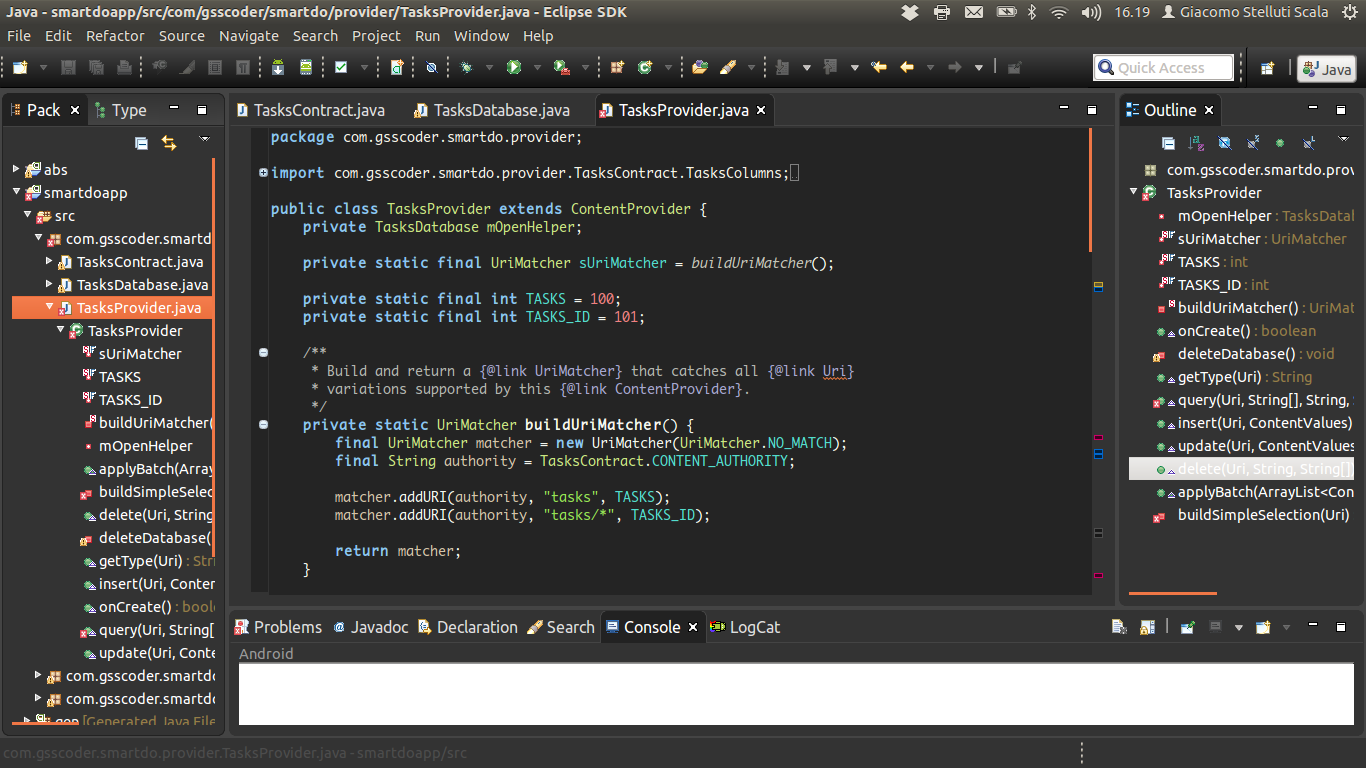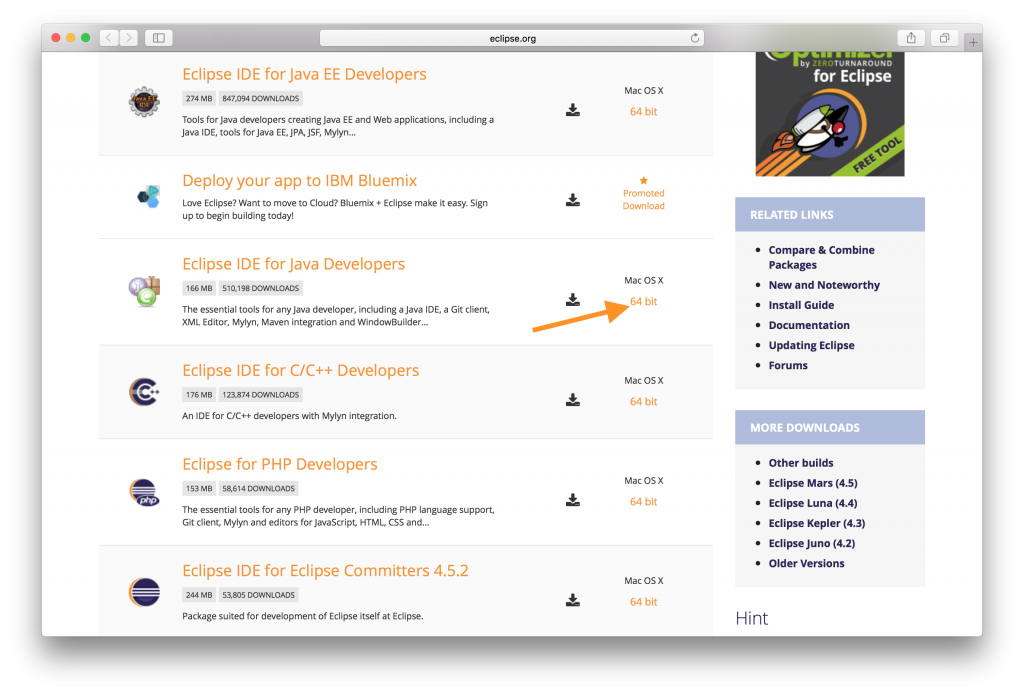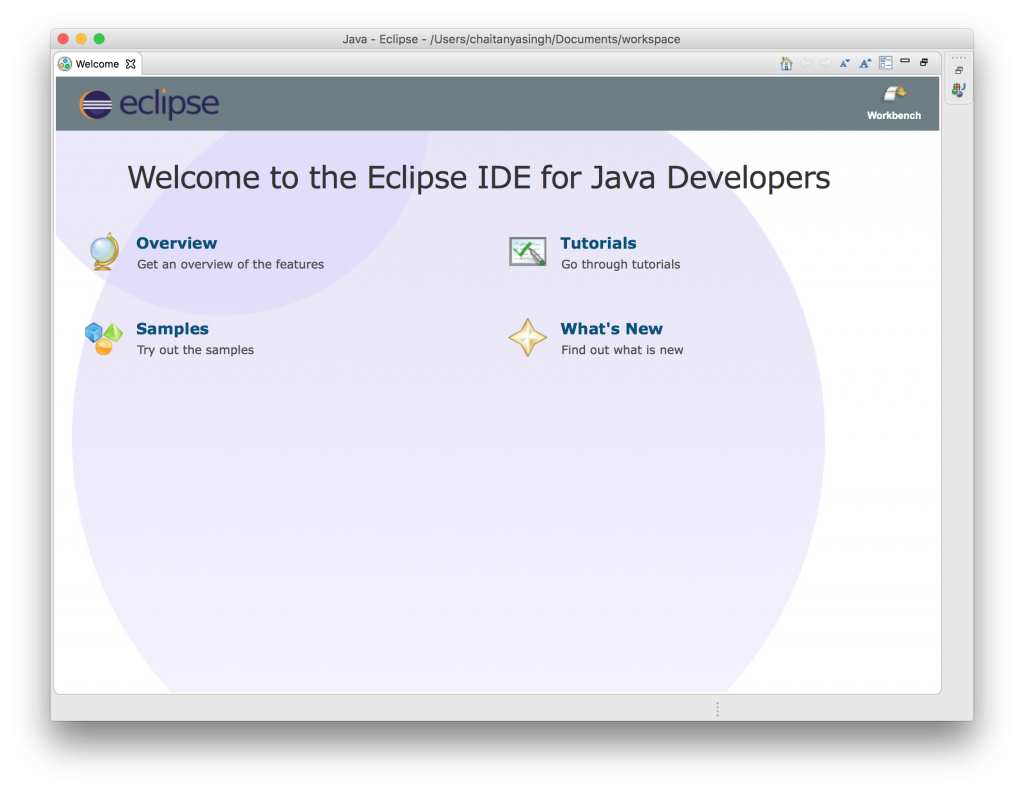Introduction
- The latest version of Eclipse is 4.9 on Mac Informer. It is a perfect match for IDE in the Developer Tools category. The app is developed by The Eclipse Foundation and its user rating is 4.4 out of 5.
- The MCUXpresso IDE brings developers an easy-to-use Eclipse-based development environment for NXP ® MCUs based on Arm ® Cortex ®-M cores, including its general purpose crossover and Bluetooth ™-enabled MCUs. The MCUXpresso IDE offers advanced editing, compiling, and debugging features with the addition of MCU-specific debugging views, code.
Eclipse ide java free download - Eclipse IDE for Java Developers (Linux), Eclipse IDE for Java EE Developers (Linux 64-bit), Eclipse IDE for Java Developers (Linux 64-bit), and many more programs. How to Install Eclipse on MacOS Introduction. Eclipse is an integrated development environment (IDE) which provides the platform for computer programming. It is the most used java programming platform which contains a base workspace and provides the programming environment for other languages also like C, C via external plugins. Eclipse is a perfect IDE for mac, windows, and Linux which can be used to develop mobile, desktop, web, enterprise as well as embedded systems java applications. Read more and get the download link here.
Eclipse is an integrated development environment (IDE) which provides the platform for computer programming. It is the most used java programming platform which contains a base workspace and provides the programming environment for other languages also like C, C++ via external plugins.
In this tutorial, we will learn the steps involved in the installation of eclipse on MacOS.
Prerequisites
- MacOS
- Login as an administrator on terminal.
Installation
Installation of Eclipse on MacOS includes several steps described below.
1) Download the latest version
This step involves downloading the latest version I.e. eclipse oxygen (by the writing of this tutorial). To install eclipse on our MacOS, we must download the latest version of eclipse by visiting its official website or simply clicking the link http://www.eclipse.org/downloads/download.php?file=/technology/epp/downloads/release/oxygen/1a/eclipse-java-oxygen-1a-macosx-cocoa-x86_64.dmg . The downloaded file exists in disk image file(dmg) format which is to be mounted first to get started with the installations.
2) Mount the dmg file
The dmg file which is downloaded from the official website of eclipse needs to be mounted first to the volumes directory. Hdiutil command can be used with the mount option to mount the file into the volumes folder. The process is shown in the image.
3) Copy Eclipse.app into Applications
After mounting the file, Eclipse.app is created inside /Volumes/Eclipse. This is an application file which needs to be copied to the application directory. The file needs to be unmounted after its deployment into the application directory.
4) Unmount the file
Unmounting the file simply involves ejecting the installer. For this purpose, unmount option is used with hdiutil command.
Well, we have successfully installed Eclipse oxygen on our MacOS.
Eclipse IDE for Java Developers
- 197 MB
- 1,383,703 DOWNLOADS
The essential tools for any Java developer, including a Java IDE, a Git client, XML Editor, Maven and Gradle integration
Eclipse IDE for Enterprise Java Developers
- 382 MB
- 773,547 DOWNLOADS
Tools for developers working with Java and Web applications, including a Java IDE, tools for Web Services, JPA and Data Tools, JavaServer Pages and Faces, Mylyn, Maven and Gradle, Git, and more.
Click here to file a bug against Eclipse Web Tools Platform.
Click here to file a bug against Eclipse Platform.
Click here to file a bug against Maven integration for web projects.
Click here to report an issue against Eclipse Wild Web Developer (incubating).
Eclipse IDE for C/C++ Developers
- 308 MB
- 650,955 DOWNLOADS

An IDE for C/C++ developers.
Download Eclipse Java Ide For Mac Os
Eclipse IDE for Eclipse Committers
- 382 MB
- 68,026 DOWNLOADS
Package suited for development of Eclipse itself at Eclipse.org; based on the Eclipse Platform adding PDE, Git, Marketplace Client, source code and developer documentation.
Click here to file a bug against Eclipse Platform.
Click here to file a bug against Eclipse Git team provider.

Eclipse IDE for Web and JavaScript Developers
- 261 MB
- 38,127 DOWNLOADS
The essential tools for any JavaScript developer, including JavaScript, TypeScript, HTML, CSS, XML, Yaml, Markdown... languages support; Kubernetes, Angular and React frameworks support; Node.js debugger; Git client; integrated terminal and remote filesystem explorer; Web and application server management.
Eclipse IDE for PHP Developers

- 252 MB
- 36,587 DOWNLOADS
The essential tools for any PHP developer, including PHP language support, Git client, Mylyn and editors for JavaScript, TypeScript, HTML, CSS and XML.
Click here to report an issue against Eclipse PHP Development Tools.
Click here to file a bug against Eclipse Web Tools Platform.
Click here to file a bug against Eclipse Platform.
Click here to report an issue against Eclipse Wild Web Developer (incubating).
Eclipse IDE for Java and DSL Developers
- 376 MB
- 34,478 DOWNLOADS
The essential tools for Java and DSL developers, including a Java & Xtend IDE, a DSL Framework (Xtext), a Git client, XML Editor, and Maven integration.
Eclipse Modeling Tools
- 439 MB
- 10,605 DOWNLOADS

The Modeling package provides tools and runtimes for building model-based applications. You can use it to graphically design domain models, to leverage those models at design time by creating and editing dynamic instances, to collaborate via Eclipse's team support with facilities for comparing and merging models and model instances structurally, and finally to generate Java code from those models to produce complete applications. In addition, via the package's discover catalog, you can easily install a wide range of additional powerful, model-based tools and runtimes to suit your specific needs.
Eclipse IDE for RCP and RAP Developers

- 303 MB
- 10,036 DOWNLOADS
A complete set of tools for developers who want to create Eclipse plug-ins, Rich Client Applications or Remote Application Platform (RCP+RAP), plus Maven and Gradle tooling, and an XML editor. It contains the EGit tooling for accessing Git version control systems, and Eclipse Passage which helps with license management for Eclipse-based products.
Eclipse IDE for Scientific Computing
- 319 MB
- 5,792 DOWNLOADS
Tools for C, C++, Fortran, and UPC, including MPI, OpenMP, OpenACC, a parallel debugger, and remotely building, running and monitoring applications.
Eclipse IDE for Testers
- 156 MB
- 5,234 DOWNLOADS
This package contains Eclipse features that support the software development quality assurance process, such as Jubula.
Install Java Eclipse Ide
Eclipse IDE for Rust Developers
- 221 MB
- 3,910 DOWNLOADS
The essential tools for any Rust developer, including Rust language support, Git client, command-line integration, and editors.
Eclipse IDE for Scout Developers
- 280 MB
- 2,506 DOWNLOADS
Download Eclipse Java Ide For Mac
Eclipse Scout is a Java/HTML5 framework to develop business applications that run on the desktop, on tablets and mobile devices. This package includes Eclipse IDE support for Scout developers and source code.
